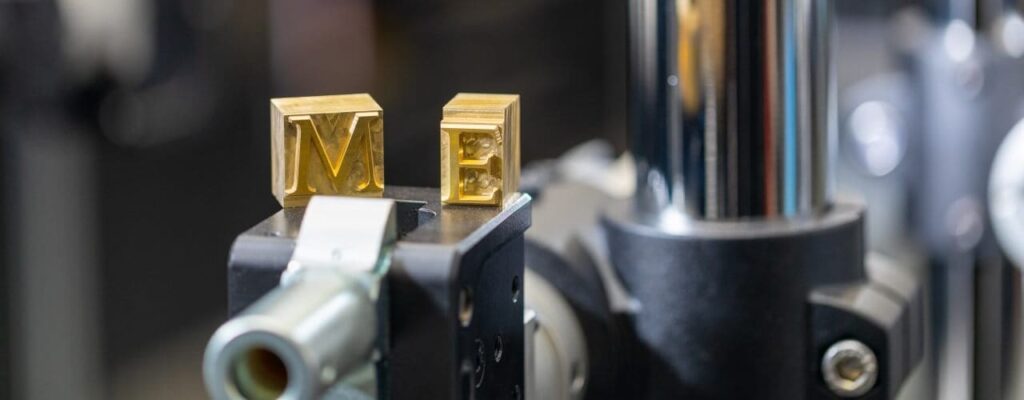

When it comes to printing projects there are lots of different finishing options. Each one can contribute to your brand perception and support your messaging. Techniques like hot stamping, letterpress and embossing also provide something unique, whether that’s a 3D textural finish or a design that will really catch the eye. All of hot stamping, letterpress and embossing have something to add to your finished design – but what’s the difference between them?
Foil stamping.
This is, essentially, the process of adding metallic foil to your finished design. It’s ideal for heavier paper stocks and is often used for distinctiveness or to convey a message of quality or decadence. Foil stamping is very simple – heat and pressure are applied to paper with a thin layer of foil in between that is stamped by a die that has your design etched on. This can be replicated as many times as necessary and you’ll get a great, clear result every time. The finished design refracts light, which means that people are much more likely to notice it and to pick it up. It can be a very effective marketing tool as well as a way to establish trust and to reinforce a sense of luxury.
Letterpress.
One of the oldest types of printing that there is, letterpress has a sense of real tradition and is often used in nostalgic designs. It is done with specially made blocks that are applied to paper using pressure and it’s this that creates a design in letterpress. Unlike foil stamping there is no foil used but instead ink – in black or blue or a range of different colours depending on the final look that you’re keen to achieve. Letterpress is often used where there is a desire to create a design that has some longevity, whether that is a wedding invitation or business cards. It has a textural feel, which means that it always looks high quality, and is incredibly versatile, whether it’s being used in a more traditional or modern way. Although letterpress is one of the most traditional printing types, it has made a real comeback recently.
Embossing.
If you’re using embossing (or debossing) then you’re taking both ink and foil off the table. Embossing works by using blocks that are heated, with pressure applied, to create depth or height to make something stand out. If you’re working with embossing then this will create a raised effect while debossing does the opposite and creates a recessed effect. Embossing or debossing can be used with a wide range of materials, from card to paper. Both are incredibly simple and yet can create a really striking effect – plus it’s often very appealing that these are inkless processes. Whether it’s for logos or on brochures, embossing and debossing are a really impactful tool.
From hot stamping to letterpress and embossing, these are just some of the ways that you can make your printed designs stand out from the crowd.